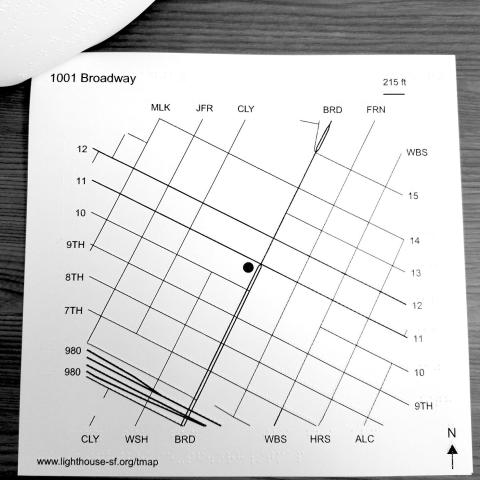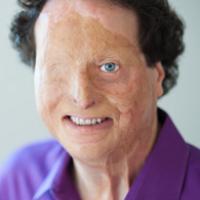

- Principal Investigator:
- Joshua Miele
Smith-Kettlewell's Tactile Map Automated Production (TMAP) Project was initiated in 2003 by Dr. Joshua A. Miele with the goal of developing the first web-based software tool for the rapid production of highly specific, tactile street maps of any location in the USA. The project was motivated by the fact that tactile maps were difficult and expensive to obtain or produce, and tactile street maps for any specific town or city were almost unheard of. TMAP brought together existing geographical information system (GIS) resources with readily-available computer-controlled embossing technologies to yield a revolutionary tool that held significant implications for education, orientation, and mobility of blind and visually impaired travelers. TMAP allowed blind travelers to, for the first time, download and emboss tactile street maps of any location in the US.
TMAP users who had their own Braille embossers (Braille printers) were able to use a web interface to specify the location and size of the desired tactile map. The map file and related key information were generated and could be downloaded immediately. The tactile map could then be "printed out" on the user's own Braille embosser. TMAP was compatible with any graphics-capable Braille embosser, including those manufactured by View Plus, Enabling Technologies, and Index.
Over its 11-year lifespan, TMAP produced thousands of tactile street maps for individuals and institutions all over the country. In 2013 the TMAP project was revitalized and improved with input from RightPoint and The San Francisco LightHouse. The improved web tool, TMAP 2.0 could be used by sighted and blind staff at LightHouse; it increased legibility, with clearly and distinctly labeled streets that touched the bounding box of the map and ultimately reduced the time required to generate maps.
LightHouse Partnership
Through an exciting partnership with the San Francisco LightHouse for the Blind and Visually Impaired, the feature-packed TMAPS 2.0 continues to provide a unique service, allowing blind and visually-impaired individuals to receive free tactile street maps by mail after ordering them by e-mail, online order request, or by phone. Visit TMAP and request a tactile map for all local and exotic wayfinding needs.
Touch Graphics Partnership
TMAP was a perfect match for the increasing availability of audio/tactile technology — hardware and software tools enabling a person to touch a tactile map or graphic and hear specific audio information associated with the location being touched. In 2005, Dr. Miele began a fruitful collaboration with Touch Graphics, Inc. - manufacturers of the Talking Tactile Tablet (TTT) - to have TMAP automatically produce audio-enabled tactile street maps. This work was funded under a Small-Business Innovation Research grant from the Department of Education. TMAP was also able to produce scalable vector graphics (SVG) street maps for use with other audio/tactile technologies such as IVEO from View Plus Technologies, Inc.

